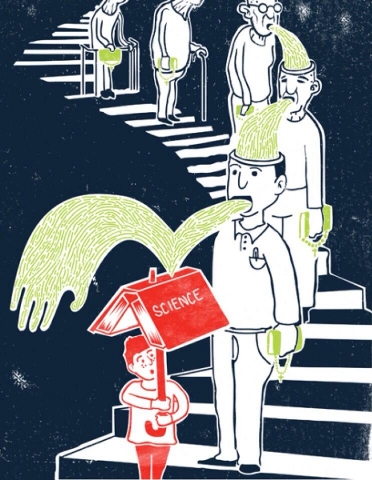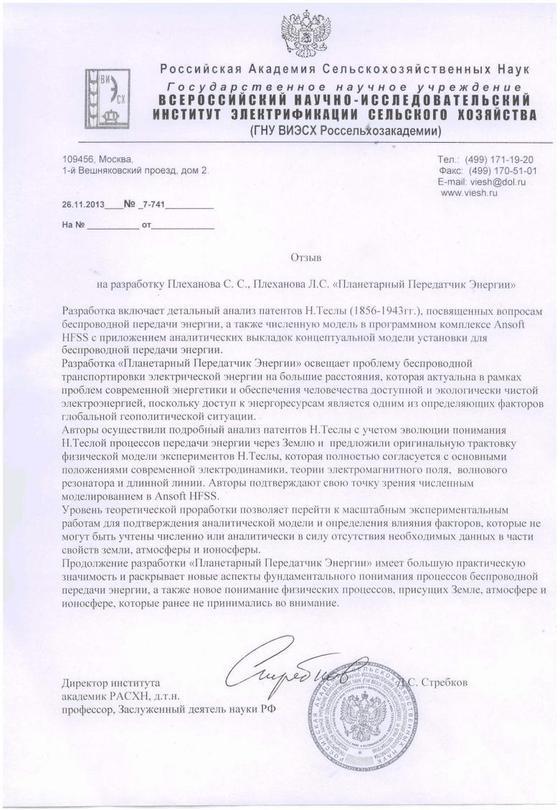Skeptics list
Loud statements require convincing evidence.
Karl Sagan ( original )

Preamble
One evening, many years ago, when I was in my first year in the glorious city of Dolgoprudny, I was walking with friends in the corridors of the university, when suddenly, quite by chance, we saw the announcement on the door: “Lecture: Slavic runes. Chudinov . It is worth noting that this is not the most popular topic for lecturers. Out of curiosity, we looked at the light and even honestly tried to understand what they were trying to tell us. After about ten minutes, we could no longer hold back the laughter and tried in a mild form to ask whether the author really believed what he was saying and whether his theories violated a number of scientific principles. The author honestly admitted that they are not trying very hard to follow some kind of principles, but they are trying to understand the essence of the issue and in general everything he says is true - look at these photos, they prove everything - right here Mara is written.
')
What is the bottom line with that very lecture? Far from being the last university, there is a lecture of dubious quality within its walls (with the sale of the speaker’s books, of course) and not only does it serve as a free platform for this kind of personality, it also beats its status. It would seem, perhaps this is an isolated case. For example, the same lecture was given in the lecture hall of the Polytechnic Museum. Later, the administration recognized this lecture and a number of others as pseudoscientific and even organized an excellent lecture “ What is amateur linguistics ” read by Academician Zaliznyak .
However, it turned out that this is no exception.
Never was and here again
Today I was surprised to find the next post.

To even greater surprise, I found the corresponding post on Habré. Of course, I can not say that this work is pseudoscientific. But as in many other cases, we have reason to doubt.
To illustrate the general idea, consider a few examples occurring on Habré and beyond. As a basic example, we will examine several articles on the SAT problem, which is well-known and popular in computer science. The task has a rather simple formulation and therefore has received sufficient attention from non-specialists who propose various solutions. As a rule, most of these works do not satisfy the basic scientific principles of writing articles and, therefore, is an excellent example for analyzing errors.
At the same time, this task is widely known enough and was highlighted several times on Habré to be a good illustrative material for a general idea. We will try not only to analyze these works, but also to reveal some common features between the “doubtful” works and try to use the obtained rules for the above-mentioned project “Planetary Energy Transmitter”.
Solution of the problem P? = NP
There is no need to go far for examples: here , here and here , thousands of them! The search gives even more results, but for illustration and these are enough.
For an expert in the SAT, it’s likely that everything will be immediately clear as soon as he sees the article with the evidence, however, let's imagine that we have absolutely no knowledge of computational complexity and we are trying to figure out how much we should trust this work.
The first thing to think about is what the experts say? An article from Wikipedia leads us to the following work: " Reasons to believe by Scott Aaronson ", that this is truly an expert we can see by looking at his CV . The author consistently proves that none of the modern mathematical techniques can provide any answer to the question about NP vs. P.
The second question, where was the article published? Even a superficial search for the query: “computational complexity conference” gives a good idea that a number of outstanding experts (as well as organizations such as IEEE, ACM etc) are working on this task and in the subject area who are able to evaluate the work in detail.
The third question is, how is this work fundamentally different from others? This is a rather interesting question. Once I was fortunate enough to attend a lecture by Donald Knut at the SAT / SMT summer school and in an informal conversation, the phrase was said that by looking at the list of references in the work and in the literature review, you can understand how deep the article is . The intuition here is approximately the following: if the author gives a qualitative detailed review of the literature, including modern works from top conferences / journals, then he has a good understanding of the subject area and positioning of his work.
The list goes on and on, but we are actually interested in a more general question than NP vs. P.
Abstract petrik in vacuum
On Habré, as well as on many other resources, there is a huge number of articles, the results of which only experts can give a definite answer. I will cite for example a few works from the closet: here , here and of course the masterpiece “Belarusian military people study torsion fields”.
Of course, no one is an expert in each field and therefore, if you publish technical calculations on a narrow subject area at Habré, then 99% will not be able to go into details and have a substantive conversation at the level of specific formulas, proofs and theories. This does not mean that the community can not assess the quality of work on any formal criteria.
We come to the old problem of determining the quality of popular science material presented to the general public. And here I would absolutely not want to reinvent the wheel. Many organizations are faced with a similar problem and you can evaluate their solutions and try to understand whether we can adapt them to Habr.
Letter tedx
The most appropriate and competent solution, in my opinion, is the letter TEDx A letter to the tedx community.
Why TEDx? In many ways, TEDx and Habr are similar: the main value of the resource is the content created by users. On the one hand, thematic resource (various topics in TEDx and Hubs), on the other hand, the material is presented to the general public. Neither TEDx nor Habr conduct and are not intended for the publication of original scientific research and suggest that the material should be understandable to a non-expert, at least at the level of ideas, an example of an excellent article in a similar format . It cannot be said that resources are similar in everything and therefore it is impossible to thoughtlessly copy a solution and apply it to the right and left, but using the specificity of the resource, we can take the first step in adapting and creating such a solution.
Next, we will give a short list of questions from the letter (or rather, their adaptation for the Habr), which the skeptics should ask themselves, when they face a new “breakthrough” work and at the same time give a short comment according to these questions on the “Planetary Energy Transmitter” project.
- This work did not convince a sufficient number of experts: the only confirmation of the correctness that we see comes from the academician of the Russian Academy of Agricultural Sciences and the Russian Academy of Natural Sciences

- The work has no experimental confirmation repeated by other scientists ( Mozart effect )
- The authors make incredibly self-confident statements: "This is an endless source of natural energy for all of humanity."
- Simplify the picture so much that the content cannot be refuted: Popper's criterion, there should be an executable experiment that could disprove this theory (preferably before the authors are transferred 10 ^ 6 rubles)
- R & D: infinite energy, time travel, alchemy, etc. see comment above about endless energy.
- The work contains a huge amount of general information that does not allow the reader to understand the work: this point, like the rest is subjective, you can get a personal assessment by running through the material
- There is no serious scientific reputation: if this work is published in Physical Review Letters, then I will transfer 10k + to the project development at the same time.
- The only authors have similar knowledge: how in 100 years, no one else has figured out how to assemble the Tesla Tower?
- Missing third-party sources of information about the project: I could not find a single third-party resource giving peer review of this project
- In the original letter is marked as "BIG RED FLAG": sells related products, services or plan
- The authors show excessive intrusiveness in accessing the site: from my position it is difficult to analyze, but it is known that the administration has already deleted the article from the resource
As in any other case, all these statements and questions cannot unequivocally indicate whether a work is qualitative or not, but they allow the reader to get some general assessment of the quality of work from the point of view of basic scientific principles.
Instead of conclusion
This article is primarily aimed at developing a discussion about what criteria should be applied to articles on Habré. Should the community have a certain list of questions that need to be answered before someone can use Habr as a platform to promote their ideas?
Are there any general principles that we should follow? The community regulates interest in articles by voting, but does it mean that we should not have any standard, what should the articles be? Will it be censored and pressured if, before the publication of such articles, they will be subject to certain requirements for compliance with certain standards?
Of course, there is no silver bullet that will solve all the problems, but the problem itself will not disappear if it is ignored.
Source: https://habr.com/ru/post/206202/
All Articles